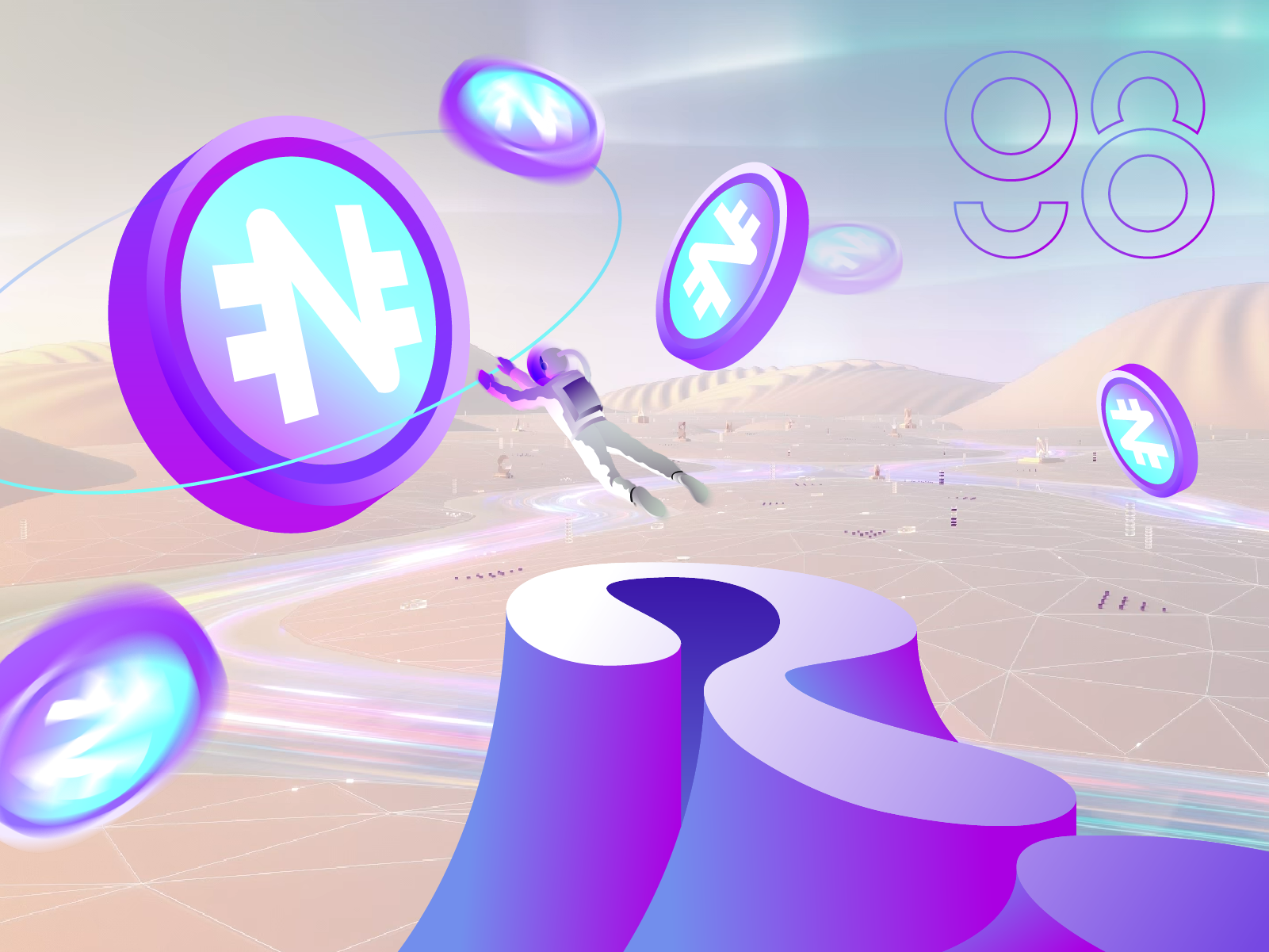What is USN? Everything about the stablecoin of the Near ecosystem

What is USN?
USN is the NEAR-native stablecoin pegged to the US dollar. Due to Decentral Bank (the founding team of USN), USN stability is supported by the on-chain smart contract for NEAR/USN arbitrage, the currency board-based Reserve Fund, full collateralization in NEAR and a basket of other stablecoins, and an active use of the decentralized exchange optimized for swapping stablecoins.
Moreover, USN fully satisfies the key conditions for any stablecoin: fast transactions, low cost of transborder payments, and outstanding stability.
USN's model: How USN works
USN’s core stabilization mechanism is based on the main on-chain smart contract which allows $USN to be swapped seamlessly for $NEAR and vice versa at any price. It means 1 $USN can be traded for $1 of $NEAR under any circumstances, and $1 of $NEAR could be traded for 1 $USN. Swapped $NEAR for $USN are accumulated by Decentral Bank Reserve Fund, using it to gain the yield to pay the minimum yield of $USN.
USN is created with 3 basic principles: initial double-collateralization ($NEAR & $USDT), automatic rebalancing of the Reserve Fund, and conservative collateral strategy. We will go through each of them respectively in this article.
Initial double-collateralization with $NEAR & $USDT
The purpose of this principle is to ensure that the value of the Reserve Fund is always greater than the value of circulating $USN. The Decentral Bank believes that overcollateral stablecoin is the best kind of stablecoin, as in the worst case, they could buy back $USN from their reserve. They started the Reserve Fund with $1B of $USDT (diversification of backed stablecoin would come later), which is called the bootstrapping phase.
Here is how the bootstrapping phase happens:
- $1B worth of $NEAR are sold to $USDT and put into the Reserve Fund.
- $USN could be minted from retail users by depositing $NEAR, and $NEAR would be put in the Reserve Fund.
Therefore, Decentral Bank ensures that the ratio between backed assets and issued $USN is at least 100%.
Automatic rebalancing of the Reserve Fund
Automatic rebalancing of the Reserve Fund is a part of the Treasury Management activity by Decentral Bank. They would constantly monitor assets in the treasury by buying and selling $NEAR on Ref Finance in the $NEAR/$USDT market. Below is the example of how automatic rebalancing looks like in real market:
The Reserve Fund constantly performs “buying the dip” and “selling the top” activities to ensure that the collateralized ratio is healthy. They developed a complicated trading bot algorithm, and if you want to read further about it, head toward the Decentral Bank $USN whitepaper here.
Learn more: What is a WhitePaper?
Conservative collateral strategy
Only battle-tested assets could be chosen to be the collateral for $USN. As $USDT is proven to be the biggest stablecoin in the market, it is the first backing asset besides $NEAR for $USN.
The role of $USN in the Near ecosystem
$USN would become an essential part of the Near ecosystem, as it would increase TVL, number of users on chain, and create a stable currency to peg the value of assets (e.g, NFTs) on the ecosystem.
In addition, $USN provides a new use case for $NEAR, increasing the amount of staked $NEAR, thus providing more security for the ecosystem. To issue $USN, $NEAR would be used to redeem, increasing locked $NEAR, thus the price of $NEAR would likely go up in the long run.
Moreover, the role of $USN is beyond the Near ecosystem. As the collapse of Terra $LUNA kingdom happened, algorithm stablecoin without a low backed assets ratio is not a good choice for investors anymore. Terra model showed its weakness by design, therefore Decentral Bank upgraded the model to make it more sustainable and harder to depeg.
Even when the APR for $USN staker is 10% (which is extremely lower than the expected rate of 20%), $USN is still very attractive to investors after considering its safety and the possibility that APR would rise to over 20% when the $NEAR price increases. $USN could be the gateway for investors who are looking for an alternative saving protocol after the fall of Anchor.
Prediction and thoughts
There are many implications of $USN for the Near ecosystem, as well as other ecosystems and the stablecoin war which is happening.
For the Near ecosystem, $USN could be considered the second best stablecoin with attractive yields, thus it’s the gateway for new users to come to the Near ecosystem. Moreover, many Dapps would soon integrate $USN, which would increase their TVL and users in those protocols, especially AMM DEXs and lending protocols.
For other ecosystems, $USN and Near ecosystem could be considered as a playbook for new ecosystems to bootstrap themselves: running an EVM chain to onboard developers, raising funds for marketing, releasing stablecoin with attractive yield to onboard users,... This playbook could be copied by other ecosystems such as Mina, Oasis and other PoS chains with big backers.
Finally, $USN would be a participant in the Curve War as $USN also needs liquidity and needs to be paired with other big stablecoins such as USDC and USDT. Curve War now has a new player, which would benefit Curve Finance and Convex directly.